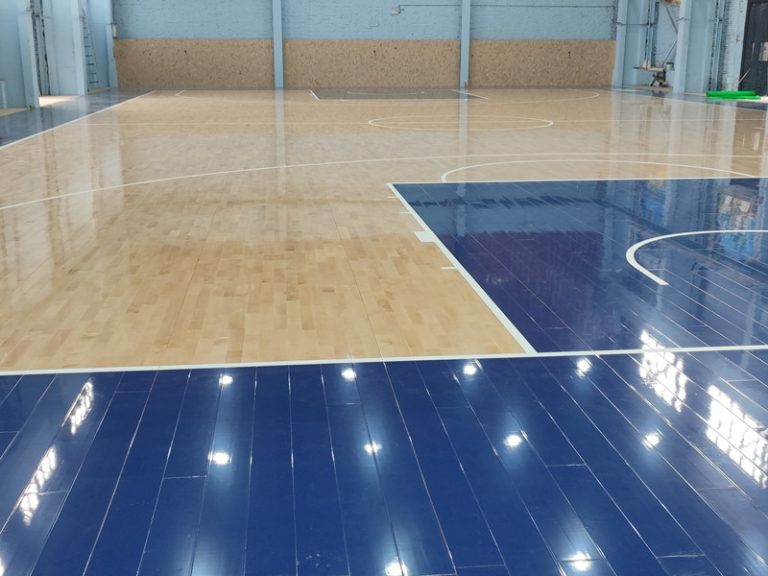When designing an indoor basketball court, one of the most important decisions you’ll face is choosing the right basketball flooring indoor. The flooring not only impacts the visual appeal of your court but also plays a critical role in player safety, performance, and durability.
Let’s take a closer look at what makes the best indoor basketball flooring and how to make an informed choice.
Why Indoor Basketball Flooring Matters
Indoor basketball requires a flooring system that can withstand high-impact action and frequent use. The court must offer excellent ball bounce, reliable traction, and shock absorption to protect athletes during jumps, pivots, and fast sprints.
The right floor also helps minimize injury risks by reducing strain on joints and muscles, making it an essential investment for any gym or arena.
Best Flooring Materials for Indoor Basketball Courts
Hardwood Flooring (Maple)
Advantages: Maple is the top choice for professional indoor basketball courts. It’s highly durable, offers consistent ball bounce, and provides excellent traction.
Applications: NBA, NCAA, and professional arenas.
Maintenance: Hardwood requires periodic refinishing, but it lasts for decades with proper care.
Synthetic PU Flooring
Advantages: This seamless flooring provides excellent shock absorption and is ideal for multi-sport use. It’s low-maintenance and provides a smooth surface for fast play.
Applications: School gyms, recreational centers, and multi-purpose facilities.
Maintenance: Easy to clean and maintain, requiring minimal attention compared to wood floors.
Vinyl Flooring
Advantages: Cost-effective and durable, vinyl flooring is perfect for budget-conscious facilities. It provides decent shock absorption and traction.
Applications: Schools, community centers, and temporary courts.
Maintenance: Minimal upkeep; just regular sweeping and mopping.
Rubber Flooring
Advantages: Great for cushioning and noise reduction. Rubber flooring can be used for multi-sport areas but isn’t ideal for basketball play zones.
Applications: Gym training zones, recreational courts, and fitness areas.
Maintenance: Requires minimal maintenance, but not suitable for high-intensity basketball games.
Key Features to Look For
Shock Absorption: Important to protect players from joint stress during high-impact movements like jumps and sprints.
Ball Bounce: Ensures the ball behaves consistently during play, allowing for better control.
Slip Resistance: Helps players maintain grip during quick movements and prevents slips.
Durability: Choose flooring that can handle heavy foot traffic, equipment, and frequent games.
Indoor Basketball Flooring Installation
Proper installation ensures the longevity and performance of your indoor basketball flooring. Here are some tips:
Subfloor Preparation: Make sure the base is clean, dry, and level before laying the flooring.
Moisture Control: Use moisture barriers when installing over concrete floors to prevent swelling in wood or synthetic materials.
Seamless Systems: Ensure the flooring is installed without gaps to avoid uneven surfaces.
Court Markings: Accurate line markings are essential for gameplay, especially for official competitions.
Maintenance Tips for Indoor Basketball Courts
Daily Cleaning: Sweep or vacuum regularly to remove debris that can damage the floor.
Weekly Care: Mop the floor using a damp cloth with approved floor cleaners.
Refinishing Wood Floors: Periodically recoat or sand down hardwood floors to maintain a smooth, durable surface.
Inspection: Check for any damage, cracks, or wear in the floor after heavy use to prevent bigger issues down the road.
Final Thoughts
The right basketball flooring indoor ensures not just a professional and visually appealing court but also enhances player safety, performance, and longevity of the court. Whether you opt for traditional hardwood or modern synthetic surfaces, your choice of material should align with your facility’s needs, budget, and intended usage.
Start with a solid foundation—investing in quality indoor basketball flooring will pay off in performance, player safety, and facility maintenance for years to come.


